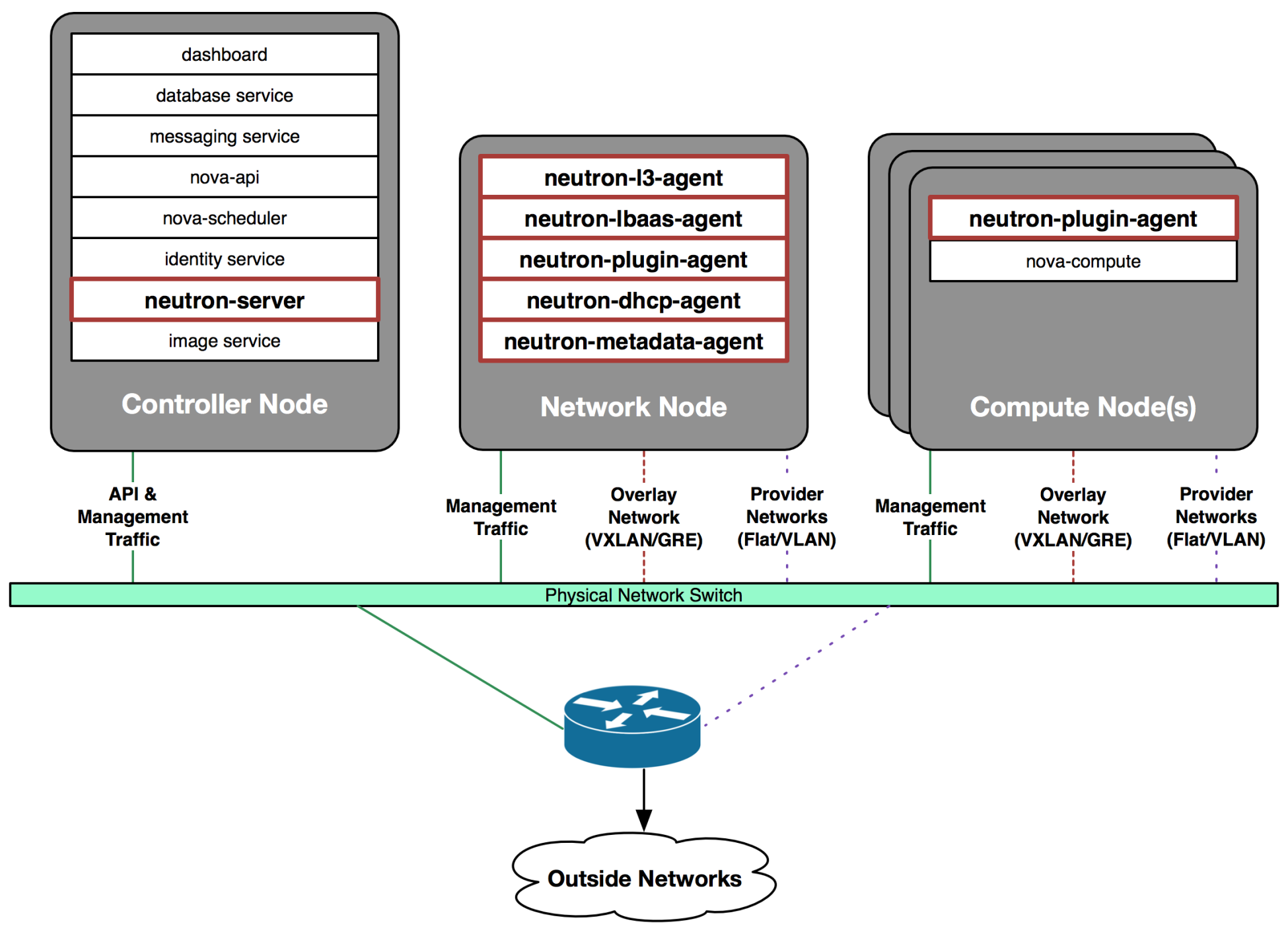Like other OpenStack services, cloud operators can split OpenStack Networking services across multiple nodes. Small deployments may use a single node to host all services, including networking, compute, database, and messaging. Others might find benefit in using a dedicated controller node and a dedicated network node to handle guest traffic routed through software routers and to offload Neutron DHCP and metadata services. The following sections describe a few common service deployment models.
Separating services across nodes
Using a single controller node
In an environment consisting of a single controller and one or more compute nodes, the controller will likely handle all networking services and other OpenStack services while the compute nodes strictly provide compute resources.
The following diagram demonstrates a controller node hosting all OpenStack management and networking services where the Neutron layer 3 agent is not utilized. Two physical interfaces are used to separate management (control plane) and instance (data plane) network traffic:

The preceding diagram reflects the use of a single combined controller/network node and one or more compute nodes, with Neutron providing only layer 2 connectivity between instances and external gateway devices. An external router is needed to handle routing between network segments.
The following diagram demonstrates a controller node hosting all OpenStack management and networking services, including the Neutron L3 agent. Three physical interfaces are used to provide separate control and data planes:

The preceding diagram reflects the use of a single combined controller/network node and one or more compute nodes in a network configuration that utilizes the Neutron L3 agent. Software routers created with Neutron reside on the controller node, and handle routing between connected project networks and external provider networks.
Using a dedicated network node
A network node is dedicated to handling most or all the OpenStack networking services, including the L3 agent, DHCP agent, metadata agent, and more. The use of a dedicated network node provides additional security and resilience, as the controller node will be at less risk of network and resource saturation. Some Neutron services, such as the L3 and DHCP agents and the Neutron API service, can be scaled out across multiple nodes for redundancy and increased performance, especially when distributed virtual routers are used.
The following diagram demonstrates a network node hosting all OpenStack networking services, including the Neutron L3, DHCP, metadata, and LBaaS agents. The Neutron API service, however, remains installed on the controller node. Three physical interfaces are used where necessary to provide separate control and data planes:

The environment built out in this book will be composed of five hosts, including the following:
- A single controller node running all OpenStack network services and the Linux bridge network agent
- A single compute node running the Nova compute service and the Linux bridge network agent
- Two compute nodes running the Nova compute service and the Open vSwitch network agent
- A single network node running the Open vSwitch network agent and the L3 agent
Not all hosts are required should you choose not to complete the exercises described in the upcoming chapters.


































































